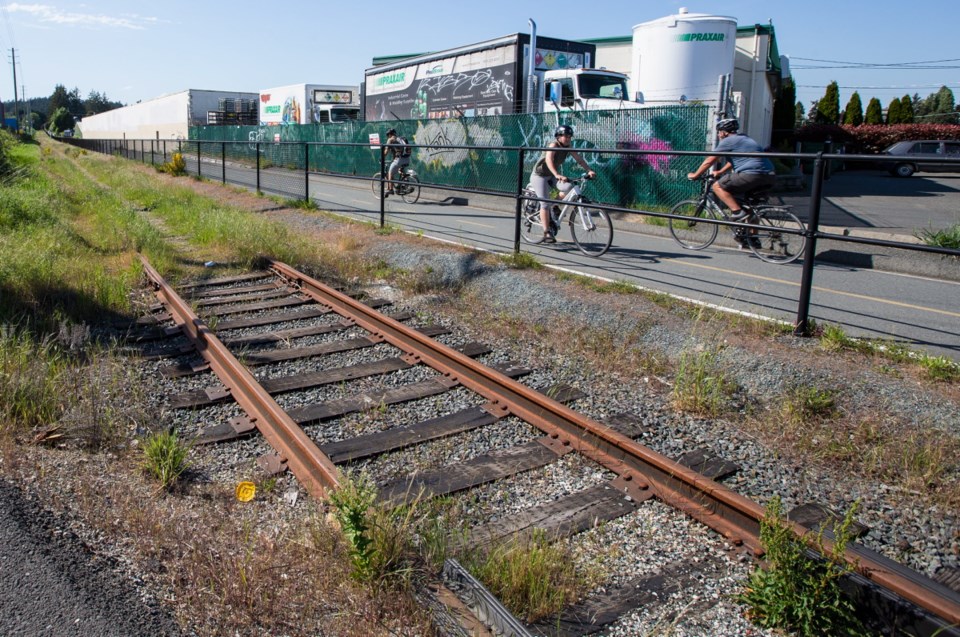Capital Regional District directors reluctantly recommended approval Wednesday of spending $500,000 for improvements to another rail crossing on the idle E&N Rail line.
The expenditure means that about $3.4 million will have been spent so far on Transport Canada-mandated safety improvements at eight level road crossings as part of the E&N Rail Trail project.
The CRD began construction of the trail project in 2009. It is a cycling and foot trail, largely within the E&N Rail corridor. When trail or road improvements are within 30 metres of a railway track at a level crossing, Transport Canada regulations require that safety upgrades are made. Ten more crossing improvements will be required by the time the 17-kilometre trail is finished, CRD staff say.
Crossing improvements average $430,000 each. The improvements must be made even though passenger traffic on the rail line was suspended in 2011 due to safety concerns.
The crossing dealt with on Wednesday is at Atkins Avenue and is part of a $4-million project to complete Phase 3 of the E&N Rail Trail — a one-kilometre section between the crossing and Savory School.
“It annoys me that we have to spend $500,000 in safety improvements,” said Coun. Judy Brownoff, adding that approaches should be made to senior governments to see if the expenditures could be deferred until the future of rail on the corridor is determined.
Last month, Premier John Horgan said that there might be a better option than rail, such as bus rapid transit, to move people along the E&N corridor.
“I think of taxpayers’ money going into this — a couple of million dollars and we could use that to build the trail,” said Brownoff, a member of the CRD parks committee considering the expenditure. “To me, it’s just like throwing taxpayers’ money into something that may not run a rail line. There has to be a better way to spend our money locally.”
Langford Coun. Lanny Seaton said his municipality has redone six crossings. “They’re expensive and we pay for the maintenance of them even though there’s not a train running,” he said.
Parks committee chairman David Screech, View Royal’s mayor, noted that Horgan didn’t say the corridor wouldn’t be used.
“The premier did clearly state that this corridor was going to be used during his term. He didn’t say for trains, but if you’re talking rapid bus, that’s also going to need crossings,” Screech said.
“That’s the reality — the crossings are going to be needed one way or the other. I agree with the comments but would hate to see us do anything that would slow up the construction of the missing links.”
Seaton said that opening this section of trail should result in an explosion of use.
“Once it’s done, that opens up the whole West Shore to two trails,” he said. “It gives you the Galloping Goose and it gives you the rail trail into town. Once that’s done, you’ll see twice as much traffic on both those trails. That’s the key right there.”
The rail corridor is owned and managed by the Island Corridor Foundation, which would like to see rail traffic restored on the line. Even though the rail line hasn’t seen a train for years, it is still considered by Transport Canada to be an active rail line and as such requires that safety upgrades are made.
Those upgrades typically require the likes of warning signs, signals and gates. “Until such time as ICF, as owner of the rail line, decides to decommission the rail line, the CRD must conform to Transport Canada regulations to complete the project,” CRD staff said in a report to the committee.
An open house on the trail design is slated for mid-July prior to the design being finalized. Construction is scheduled to begin in the fall of 2018 and be completed in the fall of 2019.



